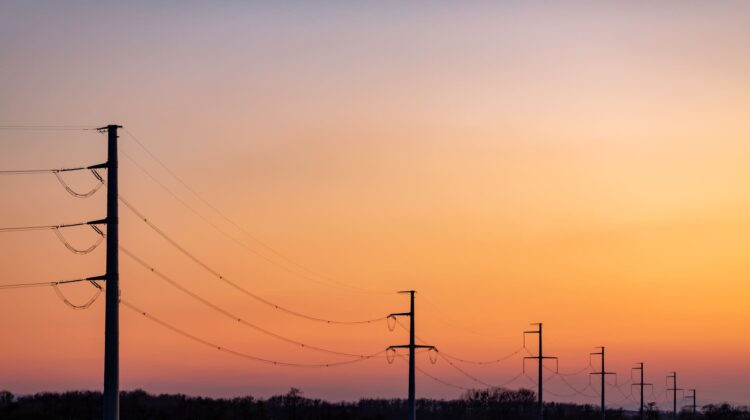
Summer Heat Waves Could Cause Blackouts Across the Country
Higher than normal temps could strain grids that are not used to unprecedented heat waves.
This summer, as much as two thirds of the United States could be in danger of electricity outages should temperatures drift higher than normal, according to a forecast by the nation’s electrical grid oversight body.
The 2023 summer forecast from the North American Electric Reliability Corporation (NERC), a nonprofit organization that maintains standards for grid reliability, shows large swaths of the West, South, Central Plains, upper Midwest, New England, and Texas could face blackouts if soaring temperatures strain electrical generation capacity.
A drop in electrical generation capacity as older coal-fired plants are retired and a general shift toward a more electrified society play a role in taxing the supply of electricity. But the biggest factor in recent years is weather, said John Moura, director of reliability assessment and performance analysis at NERC.
“Extremes are becoming normal,” he said. “And we’re starting to see that impact the grid with more frequency.”
Climate Pushes Outage Odds Up
NERC draws from forecasts of temperature and drought conditions from NOAA and other agencies, as well as estimates from electricity suppliers of how much capacity they will have. Combining the two gives the organization a look at whether supply is likely to outpace demand in coming months.
In past decades, the forecasts often looked much rosier, Moura said. Predicted outages are a more recent phenomenon.
“This is brand-new for us,” he said. “Over the past 30, 40, even 50 years, the system has been flush with capacity.”
Challenges vary by region: New England has less available capacity this year, whereas both higher demand and lower supply could strain grids in the South, and the Midwest could see issues if wind energy proves unreliable. In the West, droughts can dry up reservoirs that hydropower plants rely on, and wildfires across the country can threaten transmission lines or lead to preemptive blackouts. But in the summer, the biggest threat to the grid is heat and the air-conditioning residents rely on to cool off.
“The whole system in the summer is designed to support residential air-conditioning,” Moura said.
It needn’t be that hot for the grid to start feeling the strain, either. Loads start increasing as temperatures move into the 80s, said Jeff Dagle, the chief electrical engineer at Pacific Northwest National Laboratory, and grow significantly above 100°F (38°C).
As wider areas begin heating up, the ability of grid operators to share power with each other decreases, exacerbating potential shortages.
“The summer challenge is less about the individual particular area getting into a certain high temperature and much more about a wider-spread heat event,” Moura said.
That could happen this summer, as the 2023 heat forecast from NOAA shows large swaths of the southern United States are likely to see temperatures above normal. If temperatures don’t go too far above historic averages, the electric grid should have no trouble dealing with the loads, the NERC report shows. But if temperatures drift significantly higher than normal, which has happened in recent years with more frequency, communities could begin losing power.
Grid Adapting to New Challenges
Most studies forecasting longer-term temperature trends estimate that it will only get hotter, and heat waves will become more common as climate change heats up the globe. One recent study estimates that the number of days above 100°F (38°C) in the United States each year will double and the number of days above 105°F (41°C) will triple by midcentury compared to the end of the 20th century.
Should those hot days lead to blackouts as power generation fails to keep up with demand, humans could suffer. A study examining the effects of the 2003 New York City blackout, which took place over 2 days in August and was the largest in U.S. history at the time, estimated it caused a 122% increase in mortality from accidental deaths and a 25% increase in mortality from disease-related deaths.
Though increasing heat will likely continue to strain electrical grids, coming years could see an increase in supply as new natural gas plants and more renewable resources come online.
“We’re seeing dramatic increases in wind and solar,” Dagle said. “The challenge with those resources is they’re not always available or dispatchable at all times.”
New and better storage solutions, from banks of batteries to pumped hydropower, could help smooth out the peaks and valleys of electricity generated by renewables. And better transmission capabilities could help solve some outage issues as well, according to Dagle.
Author: Nathaniel Scharping , Science Writer
Citation: Scharping, N. (2023), Summer heat waves could cause blackouts across the country, Eos, 104, https://doi.org/10.1029/2023EO230231. Published on 14 June 2023.
Text © 2023. The authors. CC BY-NC-ND 3.0
Except where otherwise noted, images are subject to copyright. Any reuse without express permission from the copyright owner is prohibited.
Credits: This article by Nathaniel Scharping, with a link to https://eos.org is published here as part of the global journalism collaboration Covering Climate Now.
